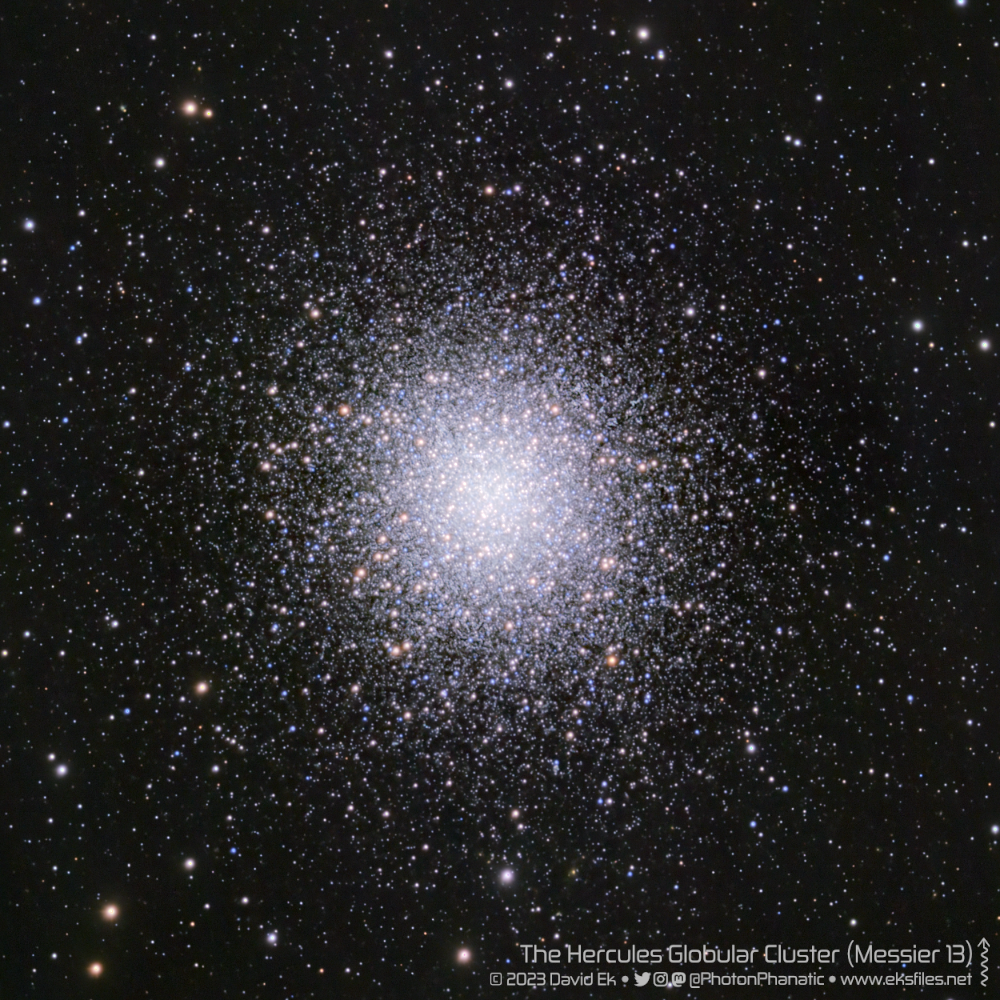Some nights of imaging just don’t go quite the way you planned. I was planning to shoot a different deep-sky object this particular evening, but my off-axis guider was improperly configured due to my own ineptness, and guiding (the process of making minute corrections to the mount’s tracking while shooting an image) was just not working. Rather than fumble around in the dark in the middle of the night, I decided to see if I could shoot shorter unguided exposures and still get something out of the night.
The Hercules Globular Cluster is a bright-enough object and doesn’t require lengthy exposures, and it was in a handy position in the sky, so I ended up shooting about 3 hours of 30-second exposures through my Celestron C8 using a Starizona SCT reducer/corrector (net focal length 1469 mm) and my ASI533MC Pro one-shot color camera. I processed the image using PixInsight and Affinity Photo.
Hardly an imaging session goes by without some sort of problem or complication arising, and I know I’m not the only one. In this case I got a little lazy and decided to just see what I could salvage. The next day I sorted out my issues:
- The guide camera couldn’t come to focus due to a spacing issue. I added just 1 mm of spacing between the off-axis guider and the main imaging camera, and that allowed me to bring the main camera and guide camera into focus simultaneously. I actually needed to add that spacer for the main camera in order to get the back focus distance correct anyway.
- I had the guide camera oriented incorrectly in the off-axis guider, meaning it wasn’t seeing everything that was being reflected to it by the guider’s prism.
- The prism of the off-axis guider wasn’t inserted far enough into the field of view. I adjusted it so that it stuck down as far as possible without casting a shadow on the main camera’s sensor.

